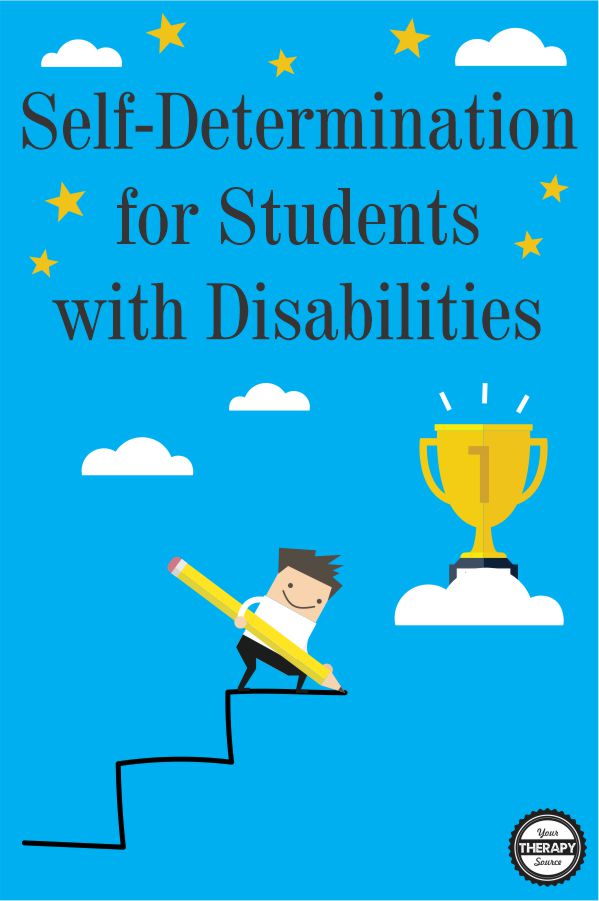Self-Determination for Students with Disabilities

Are you looking to help your students achieve their goals? Did you know that research indicates that students with disabilities who are more self-determined achieve education-related goals at a higher rate? Not only does encouraging self-determination for students with disabilities help them to reach their goals, it also results in more positive employment, community participation, and quality of life outcomes when they leave school. Wow, what an awesome skill to develop!
What Skills are Associated with Self-Determination for Students with Disabilities?
Self-determination allows students to freely chosen goals, and then complete self-determined actions so they are the causal agent in their life. There are many skills involved with self-determination to help students choose their goals and act to reach them such as:
- choice-making
- decision-making
- problem solving
- goal setting and attainment
- planning
- self-management
- self-advocacy
- self-awareness
- self-knowledge
These skills help students with disabilities to make purposeful major decisions and daily choices in their lives.
How Can Self-Advocacy Help with Self-Determination?
Self-advocacy is the ability to speak up for yourself and your rights. All students benefit from learning self-advocacy skills. When it comes to helping students with their Individualized Education Program (IEP), it is critical to involve them in the process whenever possible even at a young age.
When we teach students how to self-advocate for themselves it promotes self-determination for students with disabilities and independence. Research indicates that students who have self-determination display:
- improved academic performance.
- Increased class participation.
- better quality of life.
- increased independence.
- more employment opportunities.
The goal of self-advocacy is for students to:
- have a proactive role in IEP development.
- be aware of their own strengths and needs.
- communicate their choices and decisions.
- self-evaluate to make new decisions.
How Can You Help Develop Self-determination for Students with Disabilities?
If you have students who need accommodations such as movement breaks, graphic organizers, technology, preferential seating and more, then the Self-Advocacy for Students workbook can be your guide to help students advocate for their needs and help them to develop self-determination skills.

The goal of this 10 step Self-Advocacy for Students workbook is to help students learn to:
- have a proactive role in IEP development.
- be aware of their own strengths and needs.
- communicate their choices and decisions.
- self-evaluate to make new decisions.
- know when and where to use accommodations.
- develop self-advocacy skills to live a more independent life at school, home and the workplace.
More resources that may be helpful:
Executive Functioning Strategies for Students
IEP Goals Related to the Common Core for OT/PT Grades K-2
IEP Goals Related to the Common Core for OT/PT Grades 3-5
References:
Burke, K. M., Raley, S. K., Shogren, K. A., Hagiwara, M., Mumbardó-Adam, C., Uyanik, H., & Behrens, S. (2020). A meta-analysis of interventions to promote self-determination for students with disabilities. Remedial and Special Education, 41(3), 176-188.
Hart, J. E., & Brehm, J. (2013). Promoting self-determination: A model for training elementary students to self-advocate for IEP accommodations. Teaching Exceptional Children, 45(5), 40-48.
Kleinert, J. O. R., Harrison, E. M., Fisher, T. L., & Kleinert, H. L. (2010). “I can” and “I did”—Self-advocacy for young students with developmental disabilities. Teaching Exceptional Children, 43(2), 16-26.




